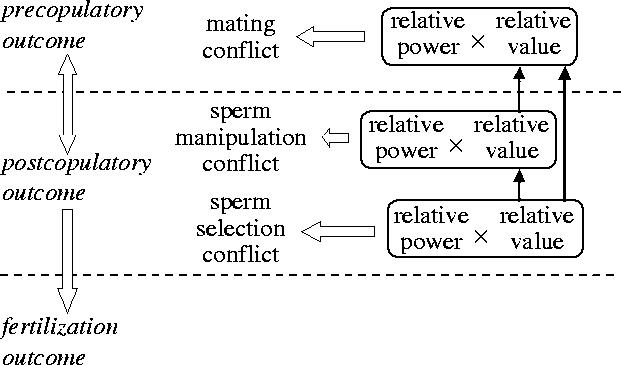Figure 9.

Interactions of subcomponents in mating and fertilization conflicts, which follow the order: mating decision conflict, sperm manipulation conflict, sperm selection conflict (assuming all three can occur). The top arrow on the left indicates the interaction between pre- and postcopulatory conflict: it is bi-directional since postcopulatory conflict occurs only if females lose the precopulatory conflict at least on some occasions (the male mates), and can also lose the postcopulatory conflict on some occasions (otherwise the male would not attempt to mate). Paternity outcome is then determined by the outcome of postcopulatory conflicts (lower left arrow). Arrows on the far right show the backward feedback concerning value of winning between the three sequential games. The fertilization outcome (outcome of sperm selection conflict) determines the value of winning ejaculate manipulation conflict. In turn, the outcome of ejaculate manipulation conflict affects the value of winning mating decision conflict (if ejaculate manipulation does not occur, sperm selection determines the value of winning mating decision conflict directly). Thus, both postcopulatory conflicts feedback towards mating decision conflict: the value of winning in mating conflict is affected by what will happen in postcopulatory conflict. In species where these three subcomponents are present, models of conflict resolution must simultaneously satisfy all three components.
